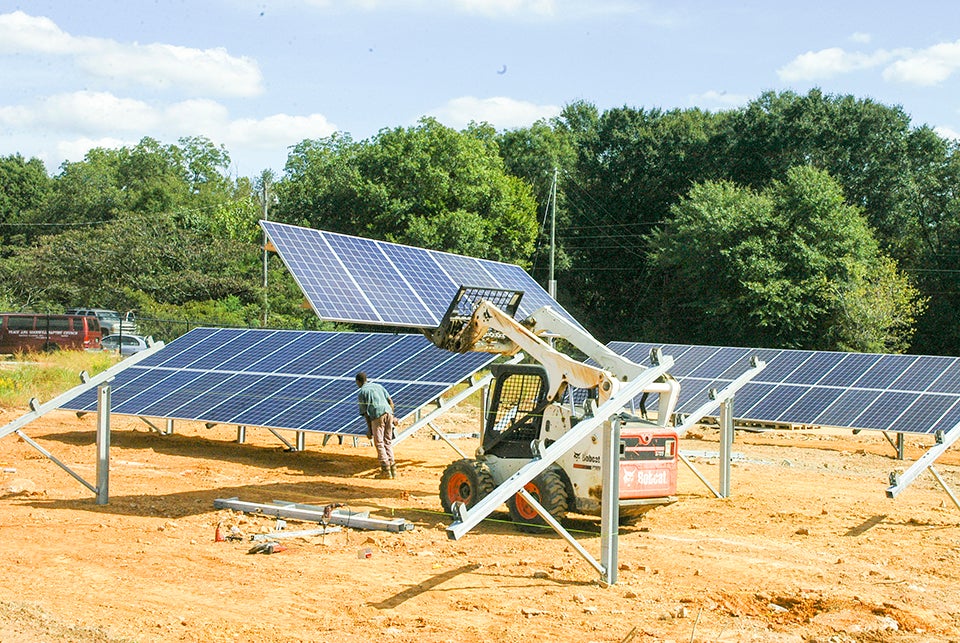Lanett install solars panels along Highway 29
Published 8:00 am Wednesday, October 16, 2019

- The Alabama Municipal Electric Authority has installed a set of solar panels in Lanett along Highway 29. AMEA has installed similar projects in nine of its 11 member cities. -- Photo by Wayne Clark
LANETT — The solar panels that have gone up on the former Lanett Bleachery and Dye Works site are part of an initiative of the Alabama Municipal Electric Authority (AMEA). The electric authority is currently in the process of installing 50-kilowatt research projects in each of its member communities and has completed nine.
According to its website, AMEA has been studying solar energy since 2016, when it completed its first 50-kW solar research facility adjacent to its headquarters in Montgomery.
While LaFayette is best known for the large solar farm on the south end of town, the city also has an AMEA 50-kW solar research project in the heart of town, just behind the Farmers and Merchants Bank.
Lanett and LaFayette are two of AMEA’s 11-member entities. The others include Alexander City, Dothan, Fairhope, Foley, Luverne, Opelika, Piedmont, Sylacauga and Tuskegee. Established in 1981, AMEA is a coalition of municipal electric utilities that provide communities with a reliable and economical source of electrical power, enabling them to preserve and enhance the benefits of municipal utility ownership for their citizens and the electric customer.
Lanett Mayor Kyle McCoy said that AMEA is leasing the site from the city. It’s about three-quarters of an acre in size and has 164 solar panels.
“They will have a contractor coming in to finish it,” he said. “At each corner, they will be building a pillar made of Lanett Mill bricks. There will be a wrought iron gate surrounding the site connecting the four pillars. It should look really good.”
The Lanett site is the ninth to be built by the AMEA. The company will add solar research projects in Piedmont and Fairhope to complete the project.
The goal is to have them in highly visible places in each community. The new one in Lanett is off a busy stretch of Highway 29. Foley’s is off the heading to Gulf Shores and Orange Beach and the one in Opelika is near Opelika High School.
AMEA is doing this to meet expected future demands.
“Hopefully within the next couple of years we will have electric car charging stations at these research stations,” McCoy said. “AMEA is looking at doing this in their member cities. The technology and the demand are getting there. We need to learn to enhance it. This is going to be the future.”





